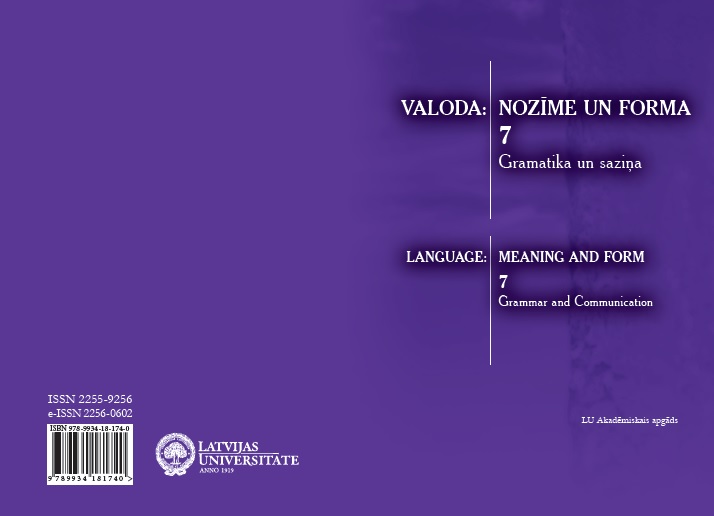Divdabji 20. gs. 20.–30. gadu latviešu terminoloģijā
Participles in the Latvian terminology of 1920s and 1930s
Author(s): Iveta PūteleSubject(s): Language and Literature Studies, Theoretical Linguistics, Applied Linguistics, Historical Linguistics, Baltic Languages, Interwar Period (1920 - 1939)
Published by: Latvijas Universitātes Akadēmiskais apgāds
Keywords: divdabji; termins; terminoloģija; valodas prakse;
Summary/Abstract: Participles are widely used in modern terminology, as they have also been in the Latvian terminology of the past century – both in word group and compound terms. In 1920s and 1930s the terminological word groups most frequently use the declinable passive present participles with the suffixes -am-/ -ām- and declinable passive past participles with the suffix -t-. The declinable active present participles with the suffix -oš-, which are widely used in terminology of our day, back then were used rather rarely, while the declinable active past participles with ar -is, -usi are extremely rare. The terminology of 1920s–30s widely uses the ability of the declinable passive present participles to express the possibilities and purpose of use. In modern terminology in the cases, when this meaning has to be indicated, these participles are frequently substituted by the declinable active present participles with the suffix -oš- or nouns with the suffix -šan-.
Journal: Valoda: nozīme un forma
- Issue Year: 2016
- Issue No: 7
- Page Range: 156-164
- Page Count: 9
- Language: Latvian

